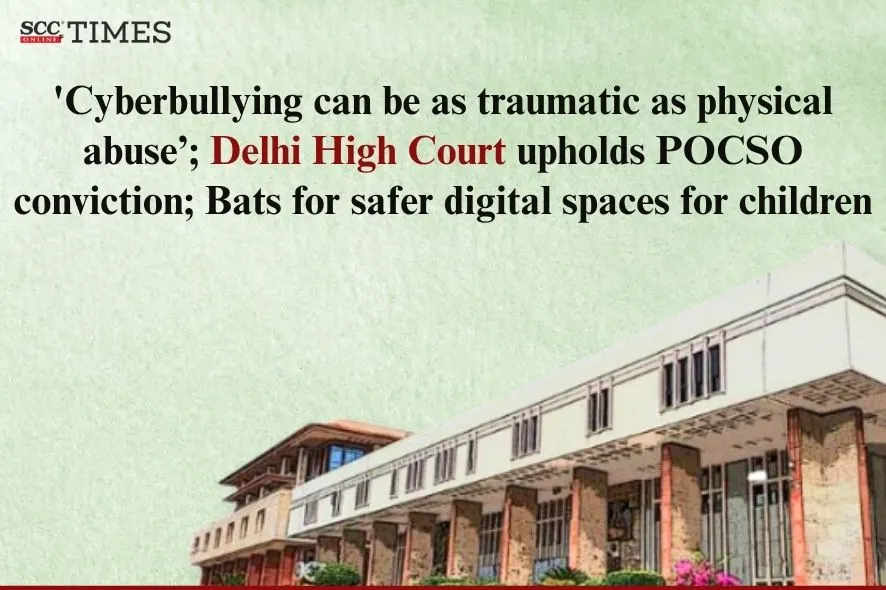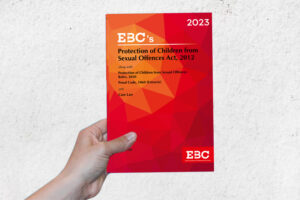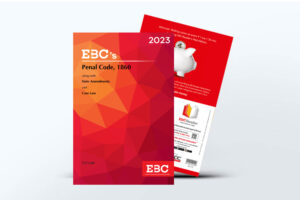Delhi High Court: In an appeal filed to assail the order passed by the Additional Sessions Judge- 1, POCSO, North-West, Rohini Courts, Delhi (‘Trial Court’), a Single Judge Bench of Dr. Swarna Kanta Sharma J., while upholding the judgment of Trial Court observed that creating a safe environment for children cannot be restricted to physical spaces alone and equal protection be extended to digital spaces also especially given increased online activity post-COVID.
The Court observed that cyber threats, even without physical contact, cause real and lasting trauma, warranting strong deterrence. The Court further observed that the crime involved a deliberate misuse of modern technology, however, it was reassuring that the same forensic and technical expertise enabled agencies to trace the crime and establish a clear chain of electronic evidence. The Court also noted the severe psychological impact of such acts on children, affecting their mental health, dignity, and self-esteem.
Background:
A complaint was lodged by the mother of the minor victim, a Class IX student on 22-9-2016, wherein it was alleged that the victim had received vulgar and obscene images on her mobile phone, through WhatsApp messages. The images were disturbing in nature, i.e. her face had been morphed onto the nude body of another person. Accompanying these images was a threatening message warning that if she did not comply with the sender’s demands, the obscene content would be uploaded on Facebook and circulated over the Internet. Based on this complaint, a First Information Report (‘FIR’) was registered, and an investigation commenced.
Upon completion of investigation, a chargesheet was filed before the Trial Court. Charges were framed for the commission of offences punishable under Sections 354A, 354D, 506, and 509 of Penal Code, 1860 (‘IPC’); Section 11(v) read with Section 12 and Section 13 read with Section 14 of Protection of Children from Sexual Offences Act, 2012 (‘POCSO Act’); and Sections 67 and 67B of Information Technology Act, 2000 (‘IT Act’). After hearing final arguments and upon conclusion of trial, the Trial Court held the appellant guilty of the alleged offences and sentenced him to 3 years and 5 years of rigorous imprisonment and fine of Rs 10,000 and Rs 50,000 under Section 12 and Section 14 of POCSO Act, 1 year of rigorous imprisonment and fine of Rs 10,000 under Section 506 of IPC and 5 years of rigorous imprisonment and fine of Rs 1,00,000 under Section 67B of IT Act . Aggrieved by conviction, the appellant preferred the present appeal.
Case Analysis and Decision:
The Court noted that the case brought forth certain pertinent issues surrounding the misuse of cyberspace, particularly its potential to inflict psychological harm and create situations of coercion through anonymous and faceless acts. It also highlighted the manner in which technology can be misused to invade privacy, morph images, and issue threats, especially to young individuals.
The Court said that it was evident that the accused morphed an image of the victim by using the body of another girl and sent the resulting obscene photograph to the victim, thereby depicting her in a sexually explicit manner which clearly amounted to showing pornography against the will of the victim and fell within the purview of Section 354A(iii) of IPC. This also amounts to sexually explicit representation of a child and constitutes use of a child for pornographic purposes as defined under Sections 11 and 13, punishable under Sections 12 and 14 of the POCSO Act, respectively. Further, the repeated messages and attempts to contact the victim through electronic means, despite her resistance, constitute the offence of stalking under Section 354D of IPC.
Further, the morphed photographs and obscene messages and threats extended to the victim, in case she did not comply with the accused‘s demands, corroborated by the victim‘s testimony, the statement of her mother, the retrieved WhatsApp chats, and the Forensic Science Laboratory report, were clearly intended to insult her modesty and intrude upon her privacy, thus attracting the offence under Section 506 and Section 509 of IPC. Sending such morphed, indecent and vulgar pictures of the victim to her which depicted the victim in obscene, in decent and sexually explicit manner came under the purview of Section 67 and 67B of the IT Act. Thus, the Court found that the prosecution had succeeded in proving the case beyond reasonable doubt and upheld the judgement of Trial Court.
The case was recognised as a textbook example of cyberbullying, involving a morphed obscene image and threatening messages targeting a minor girl, causing severe mental trauma and violating her privacy and dignity.
The Court observed that the crime involved a deliberate misuse of modern technology, where the appellant used mobile devices, internet connectivity, and frequently changed SIM cards and handsets to evade law enforcement, aiming to outsmart the investigative machinery. However, it was a matter of reassurance that the same forensic and technical tools enabled agencies to trace the crime and establish a clear chain of electronic evidence linking the accused to the commission of the offence in question.
The Court emphasised the serious psychological impact of such cyber threats on children, especially during vulnerable developmental stages, and highlighted the urgent need to create safe digital spaces alongside physical ones. It stressed that virtual abuse, even without physical contact, can cause lasting trauma, with the mere fear of online circulation of morphed content being enough to terrorize a young mind, reinforcing the necessity of strong deterrence in cybercrimes against children.
[Rajesh Gambhir v. State (NCT of Delhi), 2025 SCC OnLine Del 5180, decided on 28-7-2025]
Advocates who appeared in this case:
For the Petitioners: Ashish Sehrawat, Kapil Yadav and Nikhil Yadav, Advocates.
For the Respondent: Naresh Kumar Chahar, APP for the State with Puja Mann, Advocates.





